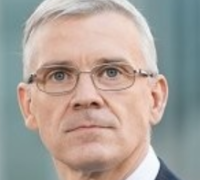The four questions to ask in order to reorganize your top team productively rather than axing at will.
You are a newly appointed CEO. Looking around the boardroom you see many figures who look comfortable on their chairs, some mildly distracted by their phones. You wonder if they look too comfortable or slightly complacent. After all, the selection committee warned you that the team, especially the core team, has been there for a too long a time. Knowledge and customer retention is what you hear has led to this. Yet you have been told you have to be an agent of change and we all know that what has led us here, won’t lead us there.
In 2017, Jan Jenisch, previously CEO of Swiss construction chemicals firm Sika, was appointed CEO of LafargeHolcim, the global leader in the cement industry. Completed in 2015, the merger of French Lafarge and Swiss Holcim had been challenging from the beginning with intense competitive scrutiny and repeated renegotiations of the deal delaying the closure by almost 15 months. From the beginning LafargeHolcim was characterized by strong rivalries between the French and Swiss management camps and political disagreements. When the first CEO of the new entity stumbled over a political scandal, the board approached Jenisch, an outsider, to break the political deadlock. After analyzing the management structure, Jenisch came to the conclusion that a radical departure from the past was needed. He acted. During his first year of Jenisch’s tenure he replaced seven out of nine members of the top management team with a mix of internal and external hires. With the new team he managed to stage a transformation that put LafargeHolcim back to global leadership in its industry.
While the team that Jan Jenisch built managed to break the deadlock at LafargeHolcim and transformed the company, not every change of the top team has a positive effect. In fact, the changes started by some CEOs look more like revengeful assassination than successful team building efforts. The CEO of a large multinational that we interviewed and observed but prefer to keep anonymous, was tasked with a change mandate like the one just described and also decided to reorganize the top team rapidly. However, rather than carefully selecting who to keep and who to send away, this CEO dismissed executives based on his lack of chemistry with some of them, sometimes dismissing the strongest but most vocal performers. The new team was built around friends and former colleagues of the new CEO, some with questionable track records. As a result, after two years of changes at the top, important customers had left with the departing executives, the top team stood isolated from the rest of the organization, little change other than personnel appointments had happened and the overall company had lost its way.
To become agents of change rather than axing at will, new CEOs must act with consideration and a very high sense of ethics and purpose. While making such considered changes is always challenging, there are some guiding principles that seem to have proven successful across a number of large organizations we studied. A new CEO, with the support of the board, should carefully reflect on four questions that increase the chances of successful management changes. Each of these questions poses a tension that the CEO needs to carefully balance in their decision making.
Does the knife need to be wielded?
Some changes are not uncommon when an outsider joins as a CEO. However, brutal changes hold substantial risks of isolating the CEO and the new team from the rest of the organization. CEOs need to keep in mind that the existing team has important know-how. Crucially, business heads usually own relationships with customers. An impetuous CEO may involuntarily or accidentally cut important assets and have customers walk out the door. Executives and customers might be pushed into the arms of the competition. At the same time, not making needed changes may stand in the way of transformation and existing top management team members may openly block, subtly boycott or at least delay change as had been the case in LafargeHolcim before the management changes. Sometimes incoming CEOs are best advised to make a clear break with the past to signal change and create a clean start, in some other situations a break is neither needed nor advised.
Who to let go?
One of the most difficult tasks for an incoming CEO is to identify the individuals they can trust, who are collaborative and appear to be an asset, but also to retain individuals who are willing to voice dissent and challenge the CEO, even though they may be more difficult to work with. The challenge is to quickly identify valuable constructive dissenters and separate them from toxic individuals who can torpedo any planned transformation. Following his appointment as CEO of the Swiss fluid engineering firm Sulzer in 2018, Greg Poux-Guillaume successfully replaced the Chief HR officer and the CFO to renew these functions, brought on board a new division head from outside to strengthen Sulzer’s emphasis on services but also retained several existing business heads to keep important know-how inhouse.
When choosing who to replace, CEOs may be well advised to also consider, in addition to performance and competence, the personality of team members, their relational assets, their disruptiveness, and the degree of association with the past strategy.
How quickly to replace people?
Toxic people anywhere in the organization and even more in the top management team can destroy an organization and therefore should be removed as quickly as possible. However, a new CEO coming into the organization from outside tends not to know the personalities of the existing team and cannot tell upfront who is the loyal dog that barks and who is the silent snake that bites. A capable new CEO needs to take enough time to identify the yes-men and retain the more difficult personalities who can however engage in constructive criticism but not procrastinate to delay change. If needed, the CEO may also need to confront the board in case of resistance to make desired changes. Finally, a CEO needs to take into consideration that removing top team members too fast may create unnecessary uncertainty throughout the organization and create a vacuum of leadership while the new management members get acquainted with the organization.
Who to hire instead?
Given the pressure of the job, an incoming CEO may be tempted to bring a complete team of trusted lieutenants to support the transformation. However, comfort and trust from having worked together in the past do not automatically translate into a high-performance team in any new environment. Instead, bringing in a team of friends, or individuals with whom the CEO has worked extensively in the past, may risk creating an echo chamber and signal that the CEO does not value the organization and its current capabilities.
Under most circumstances, CEOs should carefully consider and limit the number of external hires. The external hires they make need to be focused on merit and need in the new environment rather than personal familiarity or even friendship. Also, appointing top management team members from inside is an important signal for the organization’s talent pool and may be a prerequisite to be able to jump start change rapidly. Selected recruitment from outside should be focused on adding specific expertise in business units or to give more power and renewal to support functions.
Changes to the top management team are never straightforward since they affect the people the CEO works the closest with and are often highly emotionally charged. In addition, they are acutely symbolic for the organization. To build a high-performance top management team, the platform for any successful CEO, a careful analysis and answering to the four key questions above, has proven to be a successful way forward.
About the research
The new CEO: Assassin or agent of change? is based on over 10 years of research on CEO succession and the role it plays in organizational transformation. During that period, Thomas and Marianna have conducted more than 100 interviews worldwide with: CEOs; the executives that report directly to them; chairmen of the board that select them; and senior headhunters that support the succession process. The interviewees work for leading corporations in Asia, Europe, and North America, including multiple Fortune Global 500 companies. Interviews were based on a semi-structured interview guideline, lasted between one and three hours and were transcribed verbatim. The interviews were complemented by a large-scale quantitative research program over the past three years in which Thomas and Marianna have been working with other leading scholars on corporate governance and CEO succession studying over 1,500 CEO succession events among firms in the Standard and Poor’s 1500 index in the US from 2001-2014 testing the performance consequences of CEO succession and their explanations. Both research streams are summarized in Marianna’s and Thomas’ new book “The Next CEO: Board and CEO Perspectives for Successful CEO Succession”, to be published on 7 May 2021 by Routledge.





 Audio available
Audio available
